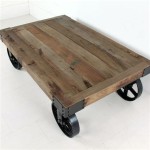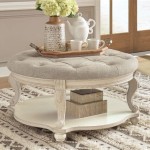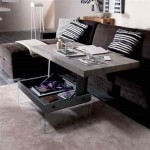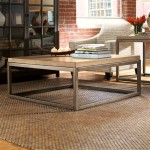What Causes a Glass Table to Shatter in the Middle?
The sudden and unexpected shattering of a glass table can be a startling and sometimes dangerous event. While glass may appear to be a solid and robust material, it is, in fact, amorphous and inherently brittle. A multitude of factors can contribute to its spontaneous disintegration, and understanding these causes can aid in preventative maintenance and responsible usage of glass furniture.
Tempered glass, commonly used in table tops for its increased strength and safety properties, is specifically engineered to break into small, relatively harmless pieces when shattered. This is a significant advantage over annealed glass, which breaks into large, sharp shards. However, even tempered glass is susceptible to shattering under certain conditions. The reasons behind this phenomenon are multifaceted, encompassing manufacturing defects, thermal stress, mechanical stress, and chemical attack. Identifying the interplay of these factors is crucial in deciphering the underlying cause of a glass table's sudden demise.
Manufacturing Defects and Impurities
During the manufacturing process of tempered glass, several imperfections can be introduced, potentially compromising its structural integrity. One of the most common culprits is the presence of nickel sulfide (NiS) inclusions. These microscopic particles can occur when small amounts of nickel contaminate the glass batch, often originating from equipment or raw materials used in production.
Nickel sulfide undergoes a phase transformation at approximately 370°C (700°F). At high temperatures, NiS exists in a stable, high-temperature phase. However, as the glass cools, the NiS attempts to convert to a lower-temperature phase, which has a slightly larger volume. If the cooling process is rapid, especially in thicker glass, this phase transformation can be "frozen" in place, leaving the NiS particle in a metastable state. Over time, at room temperature, the NiS particle will slowly continue to transform, expanding minutely. This expansion exerts internal stress on the surrounding glass matrix.
The internal stress caused by the NiS inclusion acts as a stress concentrator. When the tensile stress within the glass exceeds its fracture strength, a crack initiates at the location of the inclusion. This crack then propagates rapidly throughout the glass, leading to catastrophic failure and shattering of the table top. Although manufacturers implement quality control measures to minimize NiS contamination, it is virtually impossible to eliminate it entirely. The probability of NiS inclusions is statistically linked to the volume of the glass – thicker and larger glass pieces have a higher likelihood of containing these problematic particles.
Another manufacturing defect that can contribute to glass shattering is the presence of surface scratches or chips introduced during handling, cutting, or tempering. These imperfections act as stress risers, making the glass more vulnerable to fracture initiation under applied loads or thermal stress. Careful handling and meticulous inspection during the manufacturing process are essential to minimize these surface defects.
Thermal Stress
Temperature fluctuations can induce significant stress within a glass table top, particularly if the temperature change is uneven across the surface. Glass expands when heated and contracts when cooled. If one area of the table is significantly warmer than another, the differential expansion and contraction can create tensile and compressive stresses within the glass. These stresses, when combined with pre-existing internal flaws or manufacturing defects, can exceed the glass's breaking point.
For instance, placing a hot dish directly on a cold glass table can create a localized hot spot. The immediate area under the dish will expand, while the surrounding areas remain relatively cool. This differential expansion generates tensile stress around the hot spot, which can initiate a crack and lead to shattering. Similarly, direct sunlight focused on a portion of the table through a window can create localized heating and induce thermal stress.
The type of glass also plays a role in its susceptibility to thermal stress. While tempered glass is more resistant to thermal stress than annealed glass, it is not immune. Furthermore, darker-tinted glass absorbs more heat than clear glass, making it more prone to thermal stress-related failures. Proximity to heating vents, fireplaces, or even brightly lit lamps can also contribute to localized heating and increase the risk of thermal stress-induced shattering.
Proper ventilation and avoiding direct exposure to concentrated heat sources are crucial for mitigating the risk of thermal stress damage. Utilizing placemats or trivets to protect the glass surface from hot objects and ensuring even temperature distribution within the room can significantly reduce the likelihood of shattering.
Mechanical Stress and External Forces
Mechanical stress, arising from applied loads or external forces, is another significant contributor to glass table shattering. Even tempered glass has a finite load-bearing capacity. Exceeding this capacity, even for a brief period, can result in catastrophic failure. The distribution of the load across the table's surface also plays a critical role.
Concentrated point loads are particularly detrimental. Placing a heavy object, such as a stack of books or a piece of furniture, in the center of the table or near an edge can create high stress concentrations in those areas. The stress is not evenly distributed, and the area under the point load endures the most pressure. This elevated stress can easily exceed the glass's tensile strength, leading to crack initiation and rapid propagation.
Impact forces, even seemingly minor ones, can also cause shattering. Accidentally bumping the table with a chair, dropping a heavy object onto the surface, or even a forceful vibration can generate sufficient stress to initiate a crack, especially if there are pre-existing flaws or surface imperfections. The location of the impact is also crucial. Impacts near the edges of the table are more likely to cause shattering than impacts in the center, as the edges are inherently more vulnerable due to less support.
The design and construction of the table base and supporting frame significantly influence its ability to withstand mechanical stress. A flimsy or unstable base can cause the table top to flex and bend under load, creating uneven stress distribution and increasing the risk of shattering. A robust and well-designed base that provides adequate support and evenly distributes the load is essential for minimizing mechanical stress.
Regular inspection of the table for any signs of damage, such as chips, scratches, or cracks, is crucial for identifying potential weak points. Addressing these issues promptly can prevent further damage and reduce the risk of shattering under normal use.
Chemical Attack and Environmental Factors
While less common than the other factors discussed, chemical attack and environmental factors can also contribute to the weakening of glass and increase its susceptibility to shattering. Certain chemicals, such as strong acids or alkalis, can react with the glass surface, slowly eroding its structural integrity. Repeated exposure to these chemicals can create microscopic surface defects, weakening the glass and making it more prone to fracture under stress.
High humidity and fluctuating temperatures can also contribute to the degradation of the glass surface over time. Moisture can penetrate microscopic cracks and flaws, promoting corrosion and weakening the glass. Repeated cycles of expansion and contraction due to temperature changes can exacerbate these effects, leading to the gradual deterioration of the glass's strength.
The location of the table can also influence its exposure to environmental factors. Tables placed outdoors are subjected to a wider range of temperature fluctuations, humidity levels, and potential chemical exposure from rain, pollutants, and cleaning agents. These factors can accelerate the degradation of the glass and increase the risk of shattering.
Using appropriate cleaning agents specifically designed for glass and avoiding harsh chemicals is essential for preventing chemical attack. Regular cleaning and maintenance can also help remove contaminants and prevent the buildup of moisture on the glass surface. Protecting the table from extreme weather conditions, such as direct sunlight, heavy rain, or freezing temperatures, can also prolong its lifespan and reduce the risk of shattering.

Glass Tables Are Exploding Here S Why

Glass Tables Are Exploding Here S Why

Glass Tables Are Exploding Here S Why

Glass Tables Are Exploding Here S Why

Causes Of Spontaneous Glass Breakage And How To Prevent It Sieger Architektur Systems

Causes Of Spontaneous Glass Breakage And How To Prevent It Sieger Architektur Systems

Causes Of Spontaneous Glass Breakage And How To Prevent It Sieger Architektur Systems

Glass Tables Are Exploding Here S Why

What Causes Glass To Shatter By Itself

Causes Of Spontaneous Glass Breakage And How To Prevent It Sieger Architektur Systems
Related Posts








